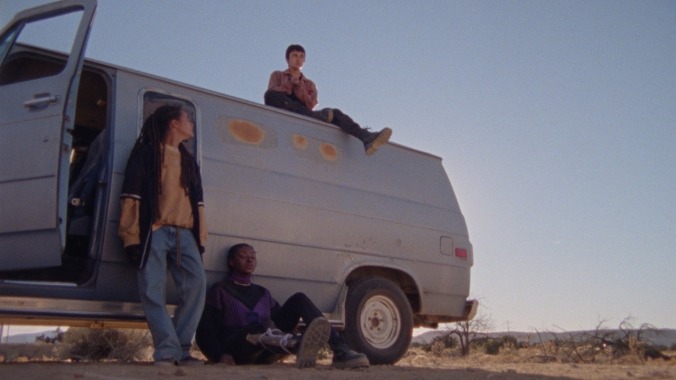How To Blow Up A Pipeline review: a propulsive climate crisis thriller
This eco-terrorism nail biter featuring an excellent ensemble cast is an electrifying work of activist filmmaking

How To Blow Up A Pipeline starts like a heist movie. Set to rhythmic music, a team of activists in West Texas separately go about their tasks, then gather together. Slowly and deliberately, each character and what they do is revealed. There’s an emphasis on work and preparation. Each character is moving, doing something, or taking care of someone. Obviously, they are getting together to perform the act that’s in the movie’s title. The “why” is held back for the time being. Propulsive and with a hint of mystery, these early scenes set the film up like a thriller.
However, How To Blow Up A Pipeline has many ideas on its mind. This is a story—urgent and of this moment in time—about the climate crisis, the personal toll it takes on a few people, and the drastic measures they employ to try and make a meaningful impact. The film is based on the 2021 book by Andreas Malm and the movie’s credits present the filmmakers as a team. This collective includes Daniel Goldhaber (writer, director, producer), Ariela Barer (actor, writer, producer), Jordan Sjol (writer, executive producer), and Daniel Garber (editor). That sense of teamwork bleeds into the very narrative. In flashbacks, each character’s story comes to light as to why and when they became a climate activist. They are a motley crew and would never have come together if not for the common cause. There’s the righteous college students (Barer and Marcus Scribner), the Christian landowner (Jake Weary), and the Native American activist (Forrest Goodluck), the latter two having been harmed by the government. There’s the cancer patient (Sasha Lane) and her empathetic girlfriend (Jayme Lawson) and two drifters (Lukas Gage and Kristine Froseth) whose story remains vague until much later in the film. Not every motive and relationship is fully fleshed out immediately and that restraint provides a sense of continuous mystery. The audience is pulled in to try and figure out all the connections.
The screenplay starts by presenting its characters in broad strokes. They are naive but knowledgeable and bold and reckless with the excitement and folly of youth. As the story advances, more nuance and insight is added. As with any team of people working together, tensions and frayed emotions begin to bubble up. There’s a palpable spark, whether the relationship is romantic or fraternal, and the actors deliver. Lawson and Lane in particular invest their interactions with passion; whenever they are in the frame together, their relationship feels fully realized even if they’re barely talking to each other. Barer and Schriber depict a different kind of love; one that comes from intensely sharing a common goal. When they look at each other or hug, their commitment and the importance of this endeavor to them is fully apparent. Also intense is Weary, upon whose face the fatigue of a long fight is easily readable.
Some of the characters’ personal reasons for becoming an activist feel tenuous and a tad too neat. When they talk amongst themselves, trying to justify what they are doing, they sound less like real people and more like mouthpieces. When they’re working together, their drive and ambition is understandable. The silences and the glances work better than the dialogue thanks to an ensemble that seamlessly plays off each other.
The filmmaking in How To Blow Up A Pipeline is of the no-frills type. Despite the combustive title, this is work that doesn’t call attention to itself. The camerawork and the editing are efficient and to the point, with no particularly beautiful tableaus or fancy jump cuts. This restraint fits the story; after all, the last thing these activists want is to call attention to themselves.
How To Blow Up A Pipeline plays like a taut thriller that tells an unusual story. Its strength lies in making a topical issue palatable and highly watchable. It offers no judgment and no easy answers yet it firmly engenders empathy for its characters’ actions. This is a climate crisis story told in a matter-of-fact way that would be dispiriting if it wasn’t for its ever-present hopeful tone.